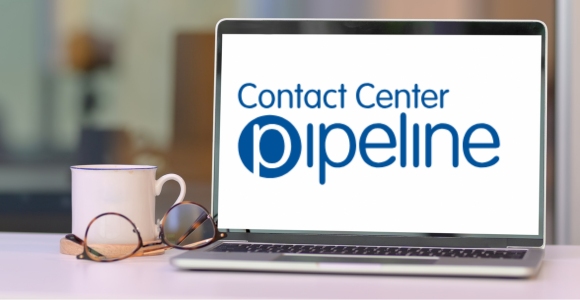The following article appeared in Contact Center Pipeline on October 3, 2023 written by Verinext’s Robbie Paul. Read the original article here.
Fully embracing an omnichannel contact center will fulfill the promise of delivering a customer experience (CX) in sync with modern culture.
The evolution from call centers to contact centers is said to have begun in 1983. Popular history cites ARPANET’S adoption of TCP/IP as the genesis of what would become the internet, and with it the ability to eventually communicate over many channels besides traditional voice: like text, email, chat, or video.
The modern contact center embraces all of these developments. However, there is more to be done to fully use the technology available to better engage customers.
Engage Employees, Develop Data-Led Views of Customers, and Move to Omnichannel
Never forget that your customers have far more power now. In our culture, “a bad social media review is mightier than the sword.”
The contact center is on the front lines of whether your company’s brand is nurtured or damaged by a CX. To implement the best possible contact center, businesses will need to be more precisely strategic in their execution, scrutinize processes in place, and reevaluate whether technology is being used to the fullest potential: or whether new technologies need to be integrated.
All of this is imperative in light of consumers’ dwindling trust in companies, notably technology marketers. A trust that had reached a higher level during the COVID-19 pandemic, but is now lessening, according to Forrester’s 2023 Predictions report.
Forrester sketches a challenging environment for improving CX. “Already, a majority of customer experience (CX) teams lack crucial skills including design thinking, inclusive experience design, survey design, journey mapping, and data literacy and storytelling.
“CX teams without these skills will remain stuck on basic find-and-fix work, unable to help their organizations innovate to thrive in a challenging business environment,” Forrester notes.
With all these challenges and economic concerns, is it worth focusing on contact center improvement, and will there be clear ROI?
Developing a modern contact strategy, however, can be headache-causing…but it can be done.
A Statista survey found 94% of customers said a positive customer service experience would make them likely to purchase again. Also, 82% would recommend a company solely based on customer service. Numerous similar statistics can be found, but what is clear is the correlation between a satisfying CX, brand management, and sales: all nurturing ROI.
Improvement Game Plan
Customer Experience Technology
For the most part, contact centers were created to address the growing digital customer universe, and had no real vision and relevance to a company’s overall business strategy.
That led to the inability to enhance CX, to integrate much needed omnichannel technology and tactics, to help employees’ productivity, to be secure and compliant in all processes, and to measure results and performance against a defined strategy.
It’s time to fix this lack of alignment and develop a clear strategy for contact center improvement. A company wishing to become more competitive in CX must make such a strategy the first step to carefully plan any process improvements or new investment.
Developing a modern contact strategy, however, can be headache-causing. Trying to achieve consensus among a company’s CX stakeholders and negotiating for budget and proving ROI value takes some grit, but it can be done. These critical actions will provide the relevant details to develop a sound strategy.
- A review of contact center goals to ensure alignment with company vision.
- Assessment of contact center performance using current technology.
- Identification of all existing technology in use to determine ability to support enhanced CX.
- Evaluation of current processes for efficiency, performance, and results.
- Data analysis to use as a foundation for designing an improvement game plan.
- Restructuring of performance indicators to align with revised strategy.
- Updates where necessary related to regulatory and standards requirements e.g., HIPAA, PCI, SOC2.
Moving Forward by IDing Gaps
Each company’s culture is somewhat unique. Exactly how a specific company achieves consensus will be influenced by culture and size. But it makes sense that a company’s lead managers in technology, sales, customer engagement, and vision must be engaged to achieve real buy in.
The result of careful analysis of performance, processes, and technology in use – gathering feedback and data from your teams – will be a lens into how closely your current contact center is aligned with company goals. Once the gaps are identified, the process of making changes can begin with the caveat that any process change cannot be a disruption to ongoing customer engagement and satisfaction.
…the modern customer wants personalization, authentic connection to the product or service…
Specifically, you can view changes in terms of customer intelligence, technology, and procedures. How well equipped your company already is, in meeting CX expectations, will give you a maturity level, a benchmark from which to gauge the effectiveness of improvements.
Customer Intelligence: Data Rules
Data-driven companies like Google, Amazon, and Apple wrote the playbook on using data to deliver the most engaging CX. They know that the modern customer wants personalization, authentic connection to the product or service, and flawless results in handling any request or issue they may have.
Data is the key to delivering this level of engagement. Companies need to develop a data-led, 360-degree view of their customers, collecting intelligence on purchases, returns, chats, customer service calls, emails, asset downloads, and payment data. This intelligence gathering should also include “social listening,” the social universe in which likes, or bad reviews can immediately help or hinder sales.
This rich amount of data will, with analysis, reveal where companies need to step up their game in handling customer requests and complaints, and will also give a more accurate snapshot of overall customer sentiment about brand engagement.
Technology: It’s All About Digital
Chatbots are a popular example of how customers like to digitally engage with companies now. It maps to the expectations of customers like Gen Z. PwC says about Gen Z, “Instant is expected. Convenience—the seamless transition from tablet to smartphone to desktop to human—is a baseline expectation.”
The answer is an omnichannel solution, a unified digital platform that can eliminate the inefficiencies of using different platforms for channels.
Most American consumers mirror the sentiment, according to PwC. “Nearly 80% of American consumers say that speed, convenience, knowledgeable help and friendly service are the most important elements of a positive customer experience.” What this tells companies is that digital interaction must be combined with employees who support the goals of giving the customer the best experience.
Technology can help customers check all the CX boxes here and, most importantly, provide support to company CX teams who clearly have to satisfactorily juggle customer contact on many fronts.
The answer is an omnichannel solution, a unified digital platform that can eliminate the inefficiencies of using different platforms for channels. Since speed and convenience are a customer priority, moving to an omnichannel platform can better organize and centralize various functions now operating through cloud, on-premise, and hybrid channels.
A unified platform also helps to support compliance and governance and eliminate silos since data, content, and customer interactions can be collected in one repository and better analyzed. It delivers a more consistent CX that is focused on all touchpoints being targeted and personalized, regardless of channel, location, device, or platform.
This more organized approach can provide new insights into the customer journey, from presale to post-sale. Most critically it nurtures better customer engagement, drives more sales, and proves ROI.
Procedures: People Matter
Besides improving CX, a modern contact center must better engage its people. While customers love digital, they also want, and miss, the human interaction. PwC notes that 82% of U.S. and 74% of non-U.S. customers want more human interaction in the future and more than half feel companies have lost touch with the human element of CX.
While an omnichannel platform and adding more automated solutions to delivering an excellent CX is important, none of this will succeed if customers’ desires for more human interaction are not acknowledged.
Employees are the answer: they can combine use of technology and automation with personal communication as appropriate. To do so effectively, however, they must have the proper training, tools, and incentives.
As new technology is implemented, employees in a contact center need to become comfortable with the technology and have a full understanding of how any technology is being used to enhance CX.
Also, these employees are a valuable source of feedback on how well more automation is working for them, for example. The end game must be a frictionless CX. CX teams, if fully empowered, can prevent unwanted customer dissatisfaction and nurture customer engagement.
Changes Ahead
There are a lot of moving parts in delivering a better CX through a modern contact center. Beginning with a strategic analysis, based on available data, and developing a structured execution path will help prevent disruption of CX workflows and enable an organized shift to a more effective CX operation.
The steps to follow are:
- Review reporting data and success metrics to date.
- Evaluate technology in place and its effectiveness to support enhanced CX.
- Determine if team structure is working at its best.
- Create a detailed plan of improvement, synthesizing information collected.
- Triangulate the plan against budget controls and improvement priorities.
- Implement training for employees on new technology and process changes.
- Execute with buy-in from teams.
Moving to the next level of CX will help you keep valuable customers and seed the environment for future growth. The trends of high customer expectations and intense competitiveness for the consumer dollar will continue. A modern contact center that delivers positive CX will be your competitive ace.
Robby Paul is the Executive Vice President at Verinext.






